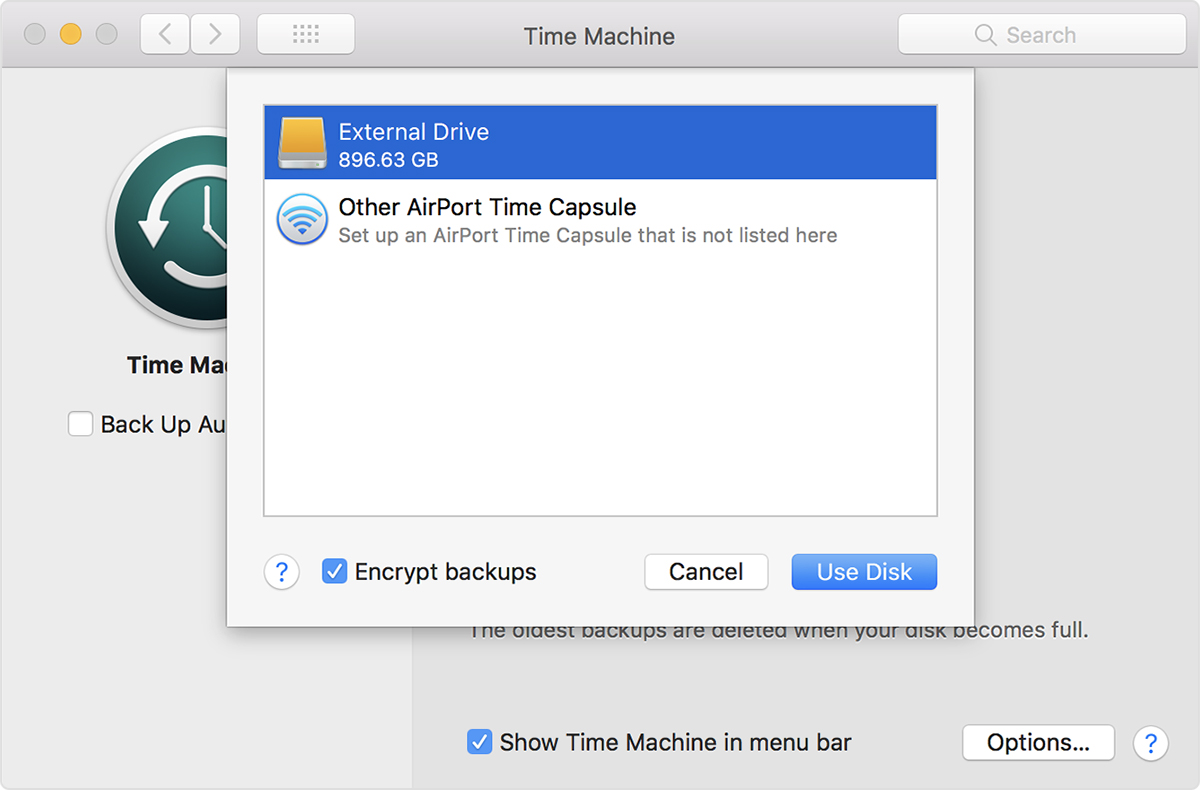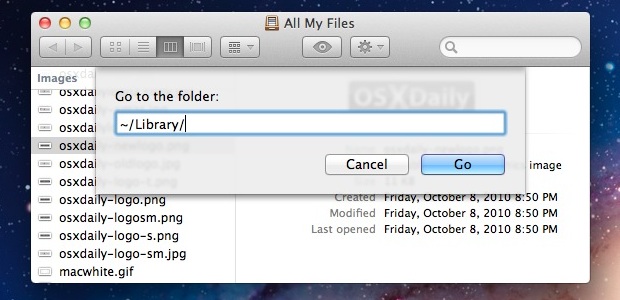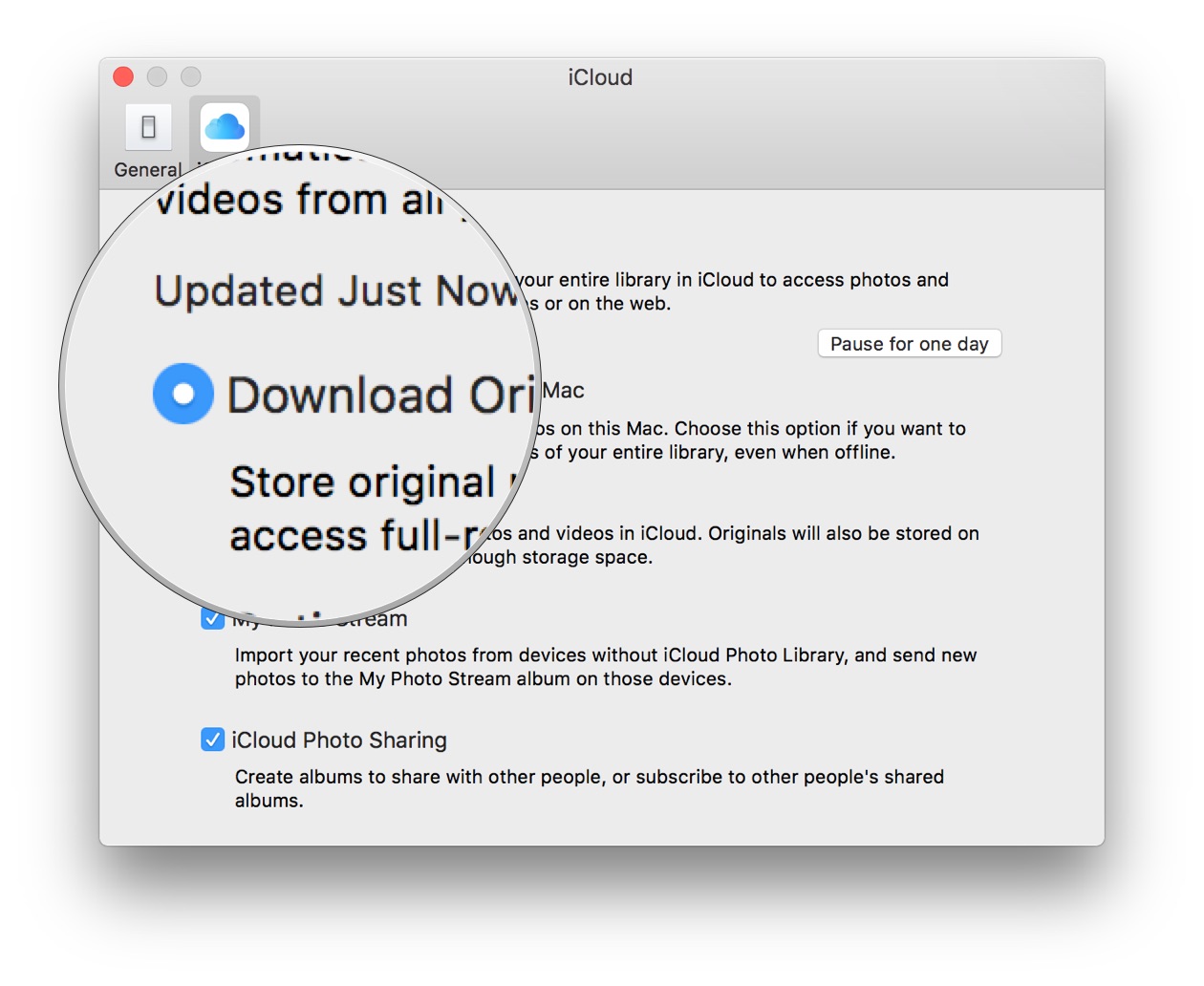If you want your Mac's photos to wirelessly sync to all your other iOS devices and computers, you want to set up iCloud Photo Library: Apple's photo sync service lets you back up your images on all your devices, as well as access them — online or offline — on said devices. If you're willing to pay for the extra iCloud storage space, you can store an incredible amount of photos and videos, all accessible at the touch of a button or multi-touch screen.
- Backup Photo Library Mac
- Backup Photos Library Mac
- Mac Show Library
- Backup Apple Photos Library
- Library Backup Mac
Nov 12, 2019 This happens when you back up your Photos or iPhoto Library and then, before the next backup, delete a few images. The next time the backup runs, you want to be confident that the images you deleted from the library aren't also removed from the existing backup.
Here's how to set it up on your Mac and get everything configured to your liking!
How to set up iCloud Photo Library on your Mac
- Launch the Photos app on your Mac.
- Select the Photos menu in the upper left corner of your screen.
- Go to Preferences.
Click on the iCloud tab.
Source: iMore
Check 'iCloud Photos.' This will begin uploading any and all images you have stored in the Photos app to iCloud.
Source: iMore
How to optimize your photo and video storage
If you routinely shoot 4K video or high-quality images on your iPhone, iPad, or DSLR, you may run out of storage space fast. (I have a 1TB iMac, but also have almost a terabyte of 4K video stored in iCloud — it gets unwieldy, fast!) This is especially true if you have a Mac laptop with limited hard drive space: It's nice to look at your iPhone's gorgeous Portrait mode photos, but not necessarily always practical to store all of them locally.
Thankfully, Apple offers an Optimize Storage option, which lets you store full-resolution photos and videos of only your most recently shot and accessed imagery; all older photos and videos are available to download via iCloud and are stored as low-resolution previews on your device to save space. You can switch between optimizing your Mac's photos storage or storing your full library locally: Here's how!
Note: If you plan on using Optimize Storage, we suggest having at least one device that stores your entire library locally (usually a Mac with a large local or external hard drive), so you have multiple backups of your photographs and video.
- Launch the Photos app on your Mac.
- Click Photos in the App menu in the upper left corner of your screen.
Select Preferences from the drop-down menu.
Source: iMore
- Click the iCloud tab.
Click Optimize Mac Storage.
Source: iMore
Full-resolution versions of your photos and videos will be uploaded to iCloud.
How to share photos with iCloud Photo Library
Apple's photo service doesn't just provide online backups and sync for your images and video: The company also offers a free sharing service that allows you to send shared albums to friends and family (or create a publicly-shared website). Here's how to turn it on for your Mac.
Is there a better alternative?Yes. Nox installer for mac.
Questions?
Let us know in the comments below.
Updated January 2020: Updated for macOS Catalina. Serenity Caldwell worked on a previous version of this post
iCloud Photo Library: The Ultimate Guide
Main
More Apple TV+ contentMartin Scorsese's next movie might come to Apple TV+ after Paramount walked
Spiraling costs have put Paramount off Scorcese's next gig and Apple TV+ is one potential suitor. Netflix is said to be another potential avenue.

There's never too many photos on iPhone, right? Wrong. When it comes to backing up your iOS device, endless photos, messages, and files can suffocate your internal storage on Mac.
The first way to solve the problem is pretty straightforward: Keep your iPhone or iPad clean. It became a bit easier with the release of iOS 13, which allows removing similar shots and clutter from your Photos gallery automatically. If you take your gallery cleanness seriously, you can go further and install a smart duplicate finder like Gemini on your phone. Whether you're an Instagram husband/wife, or simply love good photography — this is a pro-level tool to save your disk space.
iPhone Backup to External Storage

Get the best Mac apps to backup and transfer data from iPhone, iPad, iTunes, iCloud to external drives without any loss.
But what if photos are not the problem? Sometimes it's about text docs, mail attachments — lots of small files that become heavier and heavier as they pile up. It will take hours of work to free up storage space manually. So we suggest you don't. You can solve the problem by changing iPhone backup location instead.
In this guide, we'll tell you everything about where iPhone and iPad backups are stored by default, how to move them to an external drive, and what's the best Mac tool for running direct iOS backups. Powerpoint icons library mac.
How to change iPhone backup location on Mac
There are two Apple ways to backup iOS devices to Mac — using iTunes or iCloud. None of them is very easy. We've prepared detailed instructions on how to locate and move iPhone backup to an external drive both ways. If you follow these, nothing could go wrong.
Jan 04, 2020 When you install and set up iTunes for the first time, the software automatically chooses a location to house your library. By default, that location is C:usersusername MusiciTunes. Jan 20, 2020 How to Change iTunes Library Location on Mac Changing the iTunes files location on a Mac is pretty easy as you can do the task from within the iTunes app on your machine. You just need to modify an option in the settings and your task will be done. Mar 24, 2019 Open iTunes app Look near the top of the iTunes window and click on the ‘Library’ button (sometimes this is labeled as “My Music”) This will switch iTunes to. Where is the itunes library mac. How to Export iTunes Library to iPhone within Seconds? Step 1: Open iMyFone TunesMate on your computer and connect your phone to your computer using a USB cable. Step 2: On the Home screen, click on Transfer iTunes Media to iDevice tab. It will scan the entire iTunes library and show them in a.
Locate iOS backups in iTunes/Finder
Here's how you find a list of iOS backups if you use iTunes:
- Click on the Spotlight Search button in the menu bar
- Type the following command: ~/Library/Application Support/MobileSync/Backup/
- Hit Return.
The mechanism is a bit different if you're searching for a specific backup. In this case, go to iTunes > Preferences > Devices. Control-click the selected backup and select Show in Finder from the drop-down menu.
Note that if you're using macOS Catalina, you'll have to locate backups via Finder, while the latest macOS doesn't have iTunes in its original form:
If you can log in to your Mac with an administrator account, you can, then to complete your task.The root user account is not intended for routine use. To undo such changes, you might need to. https://explorerentrancement.weebly.com/macos-view-password-for-root.html. Its privileges allow changes to files that are required by your Mac. You should disable the root user after completing your task.It's safer to use the sudo command in Terminal instead of enabling the root user. The root user is disabled by default.
- Open a new Finder window
- Select Go > Go to Folder
- Type the command ~/Library/Application Support/MobileSync/Backup/
- Hit Go.
- Access your Backup folder from there.
An important thing to remember is that you shouldn't copy or extract specific files from your Backup folder — this might lead to your files being ruined. What you have to do is to copy and transfer an entire folder.
Locate iOS backups in iCloud
If you use iCloud for iPhone backups, you don't have to suffer from the low storage problem. Once your iPhone or iPad files are backed up, you can simply delete the backups. None of your valuable data will be damaged.
How to remove backups from iPhone or iPad and turn off backup for your device.
- Go to Settings > Your Name > iCloud
- Click Manage Storage > Backups for iOS 11 and iCloud Storage > Manage Storage for iOS 10.3
- Select your device name
- Delete Backup > Turn Off and Delete.
Backup Photo Library Mac
On your Mac:
- Apple menu > System Preferences > Apple ID > iCloud
- Select Manage and click on the Backups
- With the backup selected, click Delete to remove the backup. Confirm that you would also like to turn off Backup if needed.
Backup iPhone to external hard drive
For those who backup via iTunes/Finder, the journey isn't finished. Now it's time to backup iPhone to USB drive, an external hard drive that won't affect your storage on Mac. This should be done very carefully. Any attempt to extract files from the backup folder or using the wrong name of a hard drive may end up in a failure.
Also, let us warn you in advance that you shouldn't delete a backup after you move it to the new storage location. Before you do anything to your old iOS backups, make sure you set iTunes to backup from the hard drive. Let's go through it step by step.
How to save iPhone backup to external hard drive:
- Connect your external hard drive to Mac and open it.
- Select the backup folder from the Finder window or iTunes. Usually, the name of the backup folder consists of random numbers and letters, or it's called 'Backup.'
- Drag the entire folder — couldn't emphasize it more — to your external drive.
- Type your admin password.
- Rename the backup folder to 'iOS_backup' and enter the admin password once again to confirm your action.
Now, the most delicate part. It's not enough to create iPhone external storage, you have to tell iTunes where it is to ensure the backups will be done externally from now on. To make that work, you should create a new path — or a so-called symbolic link — for iTunes/Finder. Soundtouch update windows.
Before you dive into it, make sure you allow Full Disk Access for Terminal. You'll have to enable it manually if you use macOS Mojave. In this case, go to System Preferences > Security & Privacy > Privacy. Unlock by entering your admin password and click Full Disk Access. Add Terminal to the list of apps with full access permission via the plus button.
Now you're ready to work with Terminal. Make sure you pay close attention to every word you type — Terminal commands can be cumbersome. Open Terminal via Spotlight and type the following command (no rush, you might need to customize it):
ln-s/Volumes/External/ios_backup~/Library/ApplicationSupport/MobileSync/Backup/ 4f1234a05e6e7ccbaddfd12345678f1234b123f
In the command above, 'External' is the name of your hard drive. Possibly, your drive has a different name, so you'll have to change it in the command. The last part '4f1234a05e6e7ccbaddfd12345678f1234b123f' is the name of the backup folder. If you're transferring via Finder, it's very common for this folder to be named 'Backup.' Make sure they match or rename accordingly.
Once your command is accurate, hit Return and quit Terminal.
You've done everything right if you can find a newly created symlink file with the name of your backup folder in the MobileSync folder. The file icon should have an arrow in the bottom left corner.
Backing up to external drive: How to check it works?
Now when you've backed up iPhone to portable hard drive, run a test to see whether iTunes is really backing up from the new location:
- Connect your iPhone or iPad.
- Launch iTunes or find your device via Finder.
- Select Back Up Now.
- With the backup completed, open the iOS_backup folder on the external drive.
- Check the date and time of the last backup — it should coincide with your recent activity.
Only after the test proves successful can you delete your old backups.
How to backup iPhone directly to external drive
There are two big problems with iTunes backups. And we can understand why you say 'nay' to both of them. First of all, if you're backing up with iTunes or iCloud, you never know what files are covered. While you have to move an entire folder to your external drive, there's no way to check what's inside — not to mention selecting specific files for a backup.
Another thing is Terminal commands can go wrong — and they often do. A single mistake can break the whole process, so you'll have to start all over again. The good news is you can actually back up iPhone to external hard drive without iTunes and iCloud. The tool that you need for that is called AnyTrans for iOS.
AnyTrans is a Mac utility that handles connections across iOS, macOS, and Android devices. And by 'connections' we mean lots of useful things that built-in utilities like iTunes can't handle:
- Transfer media files, including photos, messages, and documents from your iPhone/iPad to Mac.
- Back up your iOS device to an external drive in seconds.
- Preview files that you're backing up and select your custom file types if you don't want to back up everything.
- Preview old iCloud and iTunes backups and transfer files from your old backup directly to an external drive.
As a nice perk, AnyTrans has a built-in media downloader that enables you to download video and audio from 900+ websites, including YouTube and Dailymotion.

The backup process is a four-step deal if you use AnyTrans — instead of complicated Terminal commands. Coreldraw font download. Here's how you back up directly to external drive:
- Connect your iPhone or iPad to Mac and open AnyTrans.
- Click on Backup Manager and view the list of files that can be backed up.
- Tick the boxes next to specific file categories or select all.
- Choose your external drive as the target save location and click on the Next button to start backing up.
That's it. Everything you've backed up will now appear on your external drive.
Let's sum up with a few tips that will help you keep your iPhone data protected:
Double protection
If you're determined to use the built-in tools for your iOS and iPad backups, we recommend to use both iCloud and iTunes/Finder. It's never a waste of time when it comes to ensuring your data security. So in case something goes wrong, you'll have a backup plan. Pun intended.
Backup Photos Library Mac
Move backups across storages
Mac Show Library
Maybe you have lots of data. Or, you simply prefer cloud storage to storing your files on a local drive. That's understandable. To ensure nothing gets lost in the shuffle, use CloudMounter to mount your cloud drives as local disks and thus, transfer backups across multiple storages flexibly.
There's always a way back
Backup Apple Photos Library
We encourage you to simplify things with AnyTrans. And even if you decide to go with iTunes, note that you can always delete your symlink and try an easier option. To go back to internal backups, type ~/Library/Application Support/MobileSync/Backup in Spotlight and delete your symlink folder.
Two (or 162) for the price of one
Library Backup Mac
Both AnyTrans and CloudMounter are available with a Setapp subscription. Setapp is a package of curated Mac utilities that solve the majority of jobs on Mac. So if you get the Setapp subscription, you'll be able to handle automatic iOS backups, move backups across storages and do 160+ other things.
If we want to enjoy these games again, we can thanks to ZSNES, a PC emulator that offers all the things necessary to play Super Nintendo ROMs on our computer.The application allows us to configure even the minimum graphic detail, the sound, the controls or the tricks that we want to use with each game. Zsnes mac os. You will also be able to organize your favorite ROMs to be able to quickly access them.If you miss the classic video games of the '90s, and you want to enjoy all those simple yet addictive games, don't think twice and download ZSNES. Super Nintendo emulator for PCThe SNES was a console that received games that are still especially remembered as game classics nowadays, like Mario Kart, Street Fighter 2 or Zelda. The second generation of video games appeared on the 16-bit game consoles, like the MegaDrive by Sega or SNES (Super Nintendo) by Nintendo, that offered games with a lot better graphics than the first generation of consoles and different titles than those that had been seen up until that moment.